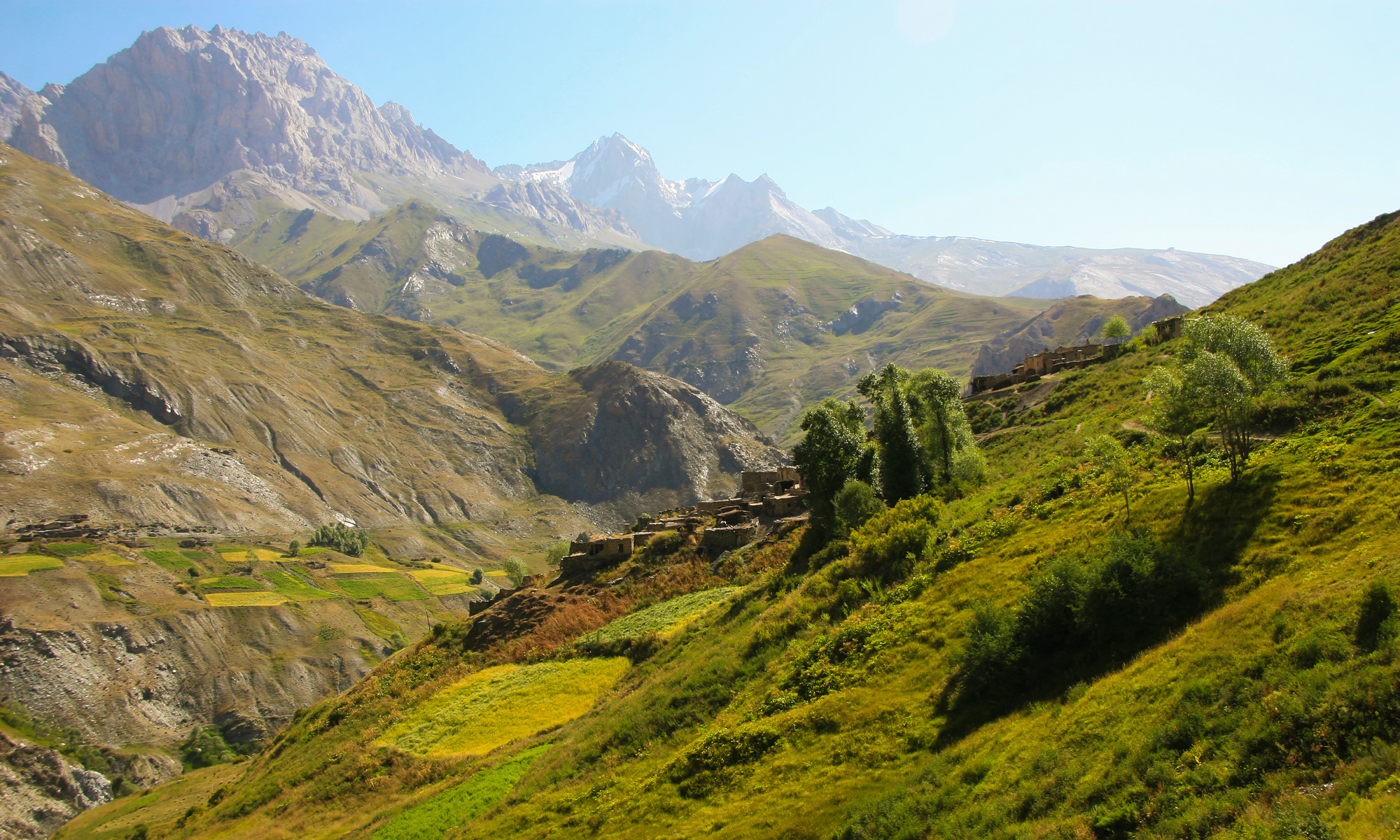High in the mountains of northern Tajikistan, the Yaghnob Valley unfurls like a hidden mosaic—meadows laced with thyme, cliffs that shelter wild goats, and streams that pulse with snowmelt and memory. Life here is not abundant in volume, but in detail: each species, each ecological rhythm, refined by altitude, isolation, and time.
This fragile alpine environment, shaped by centuries of sustainable land use and cultural stewardship, is now under increasing pressure from climate change, habitat degradation, and the absence of formal protection. The Yaghnob Valley stands at a crossroads—not just for its communities, but for its irreplaceable ecosystems.
Without targeted conservation efforts, this living archive of Central Asian biodiversity risks becoming a lost chapter.
The Yaghnob Valley sits at an elevation of 2,000–3,000 meters, straddling the ecological transition between arid steppe and subalpine forest. Its varied terrain—ridges, gorges, terraced slopes—supports a high diversity of flora and fauna adapted to extreme seasonal variation.
Key species include:
-
Medicinal and wild herbs such as wild thyme (Zand), yarrow (Achillea millefolium), and wild rue (Espand), used in traditional remedies and rituals.
-
Endemic fauna like the endangered markhor and ibex, which rely on intact grazing corridors and high-altitude refuge areas.
-
Predators including wolves, brown bears, and the elusive snow leopard, part of broader conservation priorities across Central Asia.
-
Birds of prey such as eagles and hawks, nesting on cliff faces and playing a role in the valley’s ecological balance.
-
Invertebrates and alpine pollinators, which are crucial to seasonal flowering cycles, yet rarely studied due to the valley’s remoteness.
Despite this biodiversity, Yaghnob remains outside of Tajikistan’s current network of protected areas, leaving its ecosystems highly vulnerable to unregulated exploitation and climate-related disruptions.
Although Yaghnob’s isolation once served as a form of passive protection, mounting environmental pressures now demand active intervention:
-
Climate Change: Altered snow patterns and early spring thaws reduce water availability during critical growing periods. Glacial retreat also affects the streams that sustain both human and animal life.
-
Overgrazing: The breakdown of traditional pasture rotation—exacerbated by population shifts—has led to soil compaction, erosion, and the loss of native plant species.
-
Depopulation and Knowledge Erosion: With younger generations migrating to urban centers, traditional ecological knowledge about foraging, seasonal indicators, and medicinal plants is disappearing.
-
Illegal Hunting and Unsustainable Harvesting: Lack of enforcement allows for unsustainable herb collection and poaching of rare species like ibex and wild birds, further disrupting fragile food webs.
-
No Legal Protection: Without park status or regulatory oversight, local flora and fauna are exposed to development pressures, logging, and external resource extraction.
Efforts to establish a Natural-Ethnographic Park in the Yaghnob Valley offer a timely and holistic response. Rather than isolating conservation from culture, the proposed park would unite ecological and human systems under a shared protection model.
Proposed conservation interventions include:
-
Botanical and Zoological Surveys: Systematic documentation of endemic species, with an emphasis on identifying species under threat and mapping biodiversity corridors.
-
Community-Based Protected Areas: Empowering local residents to co-manage sensitive zones through rotational grazing, anti-poaching patrols, and ecological monitoring.
-
Sustainable Foraging Regulations: Guidelines for the harvest of medicinal plants based on seasonal availability and regeneration rates, potentially linked to eco-certification schemes.
-
Environmental Education in Schools: Integrating ecological knowledge into rural curricula, emphasizing biodiversity, stewardship, and the value of local species.
-
Eco-Tourism and Nature Trails: Low-impact tourism infrastructure (e.g. marked trails, herbal gardens, wildlife viewing zones) to create income opportunities while preserving environmental integrity.
-
Integration into National and Regional Frameworks: Coordination with Tajikistan’s Ministry of Environment, international conservation organizations, and global biodiversity targets (e.g. Aichi Biodiversity Targets, SDG 15).
These efforts could transform the Yaghnob Valley into a living model of integrated conservation, where traditional land use, scientific monitoring, and sustainable livelihoods reinforce one another.
For the Yaghnobi communities who remain in the valley, nature is not abstract. It is immediate, intimate, and essential. Rivers are named, animals recognized as kin or adversary, and plants categorized not only by species but by use, season, and spirit. Even without formal records, this body of ecological knowledge is deep—and increasingly endangered.
As one elder noted of a now-silent stream:
“When that river stopped, the bees stopped coming. The flowers changed. Our gardens spoke less.”
To preserve biodiversity in Yaghnob is not just to protect species—it is to preserve a relationship with the land that has remained largely sustainable, despite poverty, displacement, and political neglect.
Yaghnob’s ecological value cannot be separated from its cultural logic of restraint and care. In a world seeking models for low-impact living, climate adaptation, and community-centered conservation, Yaghnob stands as both example and warning.
What is needed now is recognition—and action:
-
Legal designation of the valley as a protected ecological zone
-
Community-led conservation initiatives, supported with technical expertise
-
Investment in research, monitoring, and local environmental education
-
Protection of traditional stewardship systems that have sustained biodiversity quietly for generations
The petals that bloom each summer on these high meadows are not simply beautiful. They are signs of resilience. And resilience, when noticed and nurtured, can grow into protection.
